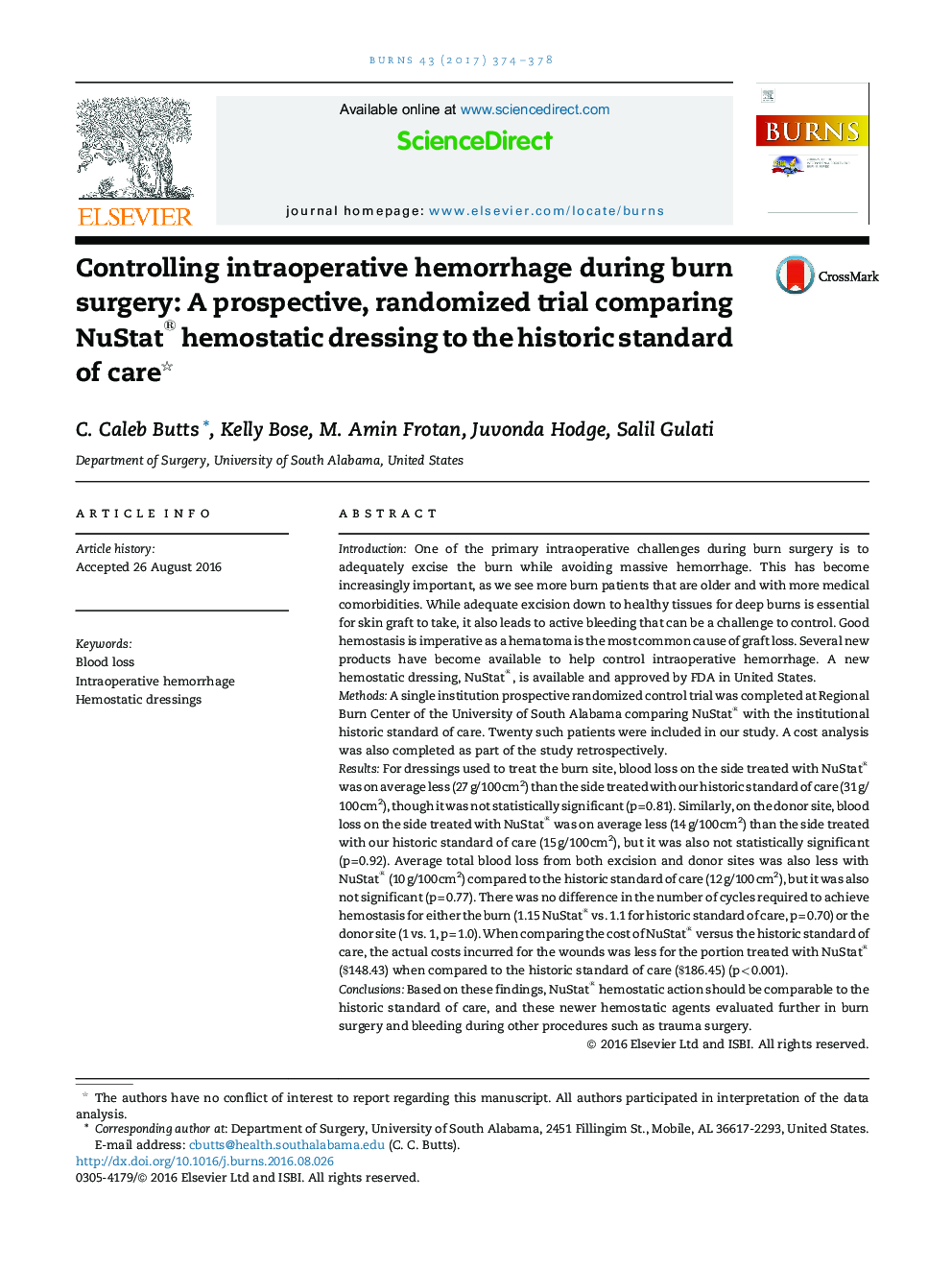| کد مقاله | کد نشریه | سال انتشار | مقاله انگلیسی | نسخه تمام متن |
|---|---|---|---|---|
| 5635992 | 1406659 | 2017 | 5 صفحه PDF | دانلود رایگان |

- Evaluation of a new hemostatic dressing (NuStat®) is evaluated to control intraoperative hemorrhage.
- NuStat® is at least comparable to our instutition's historic standard of care.
- Use of these dressings may have broader application in other traumatic injuries beyond burns.
IntroductionOne of the primary intraoperative challenges during burn surgery is to adequately excise the burn while avoiding massive hemorrhage. This has become increasingly important, as we see more burn patients that are older and with more medical comorbidities. While adequate excision down to healthy tissues for deep burns is essential for skin graft to take, it also leads to active bleeding that can be a challenge to control. Good hemostasis is imperative as a hematoma is the most common cause of graft loss. Several new products have become available to help control intraoperative hemorrhage. A new hemostatic dressing, NuStat®, is available and approved by FDA in United States.MethodsA single institution prospective randomized control trial was completed at Regional Burn Center of the University of South Alabama comparing NuStat® with the institutional historic standard of care. Twenty such patients were included in our study. A cost analysis was also completed as part of the study retrospectively.ResultsFor dressings used to treat the burn site, blood loss on the side treated with NuStat® was on average less (27 g/100 cm2) than the side treated with our historic standard of care (31 g/100 cm2), though it was not statistically significant (p = 0.81). Similarly, on the donor site, blood loss on the side treated with NuStat® was on average less (14 g/100 cm2) than the side treated with our historic standard of care (15 g/100 cm2), but it was also not statistically significant (p = 0.92). Average total blood loss from both excision and donor sites was also less with NuStat® (10 g/100 cm2) compared to the historic standard of care (12 g/100 cm2), but it was also not significant (p = 0.77). There was no difference in the number of cycles required to achieve hemostasis for either the burn (1.15 NuStat® vs. 1.1 for historic standard of care, p = 0.70) or the donor site (1 vs. 1, p = 1.0). When comparing the cost of NuStat® versus the historic standard of care, the actual costs incurred for the wounds was less for the portion treated with NuStat® ($148.43) when compared to the historic standard of care ($186.45) (p < 0.001).ConclusionsBased on these findings, NuStat® hemostatic action should be comparable to the historic standard of care, and these newer hemostatic agents evaluated further in burn surgery and bleeding during other procedures such as trauma surgery.
Journal: Burns - Volume 43, Issue 2, March 2017, Pages 374-378